My research is about the way ordinary Chinese families buy New Year’s goods. I want to know whether the epidemic and the development of the Internet have any impact on this.
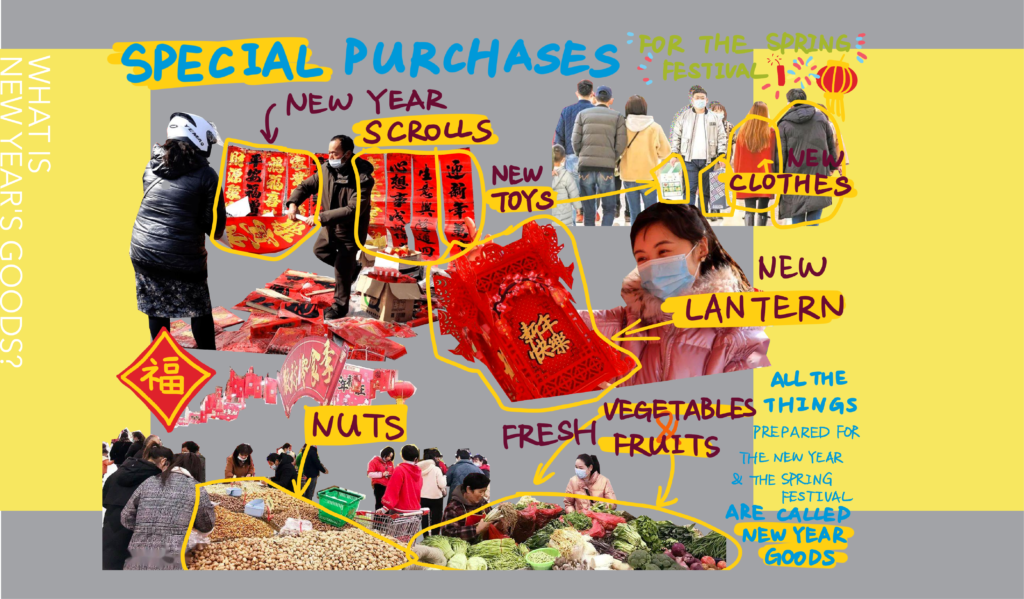
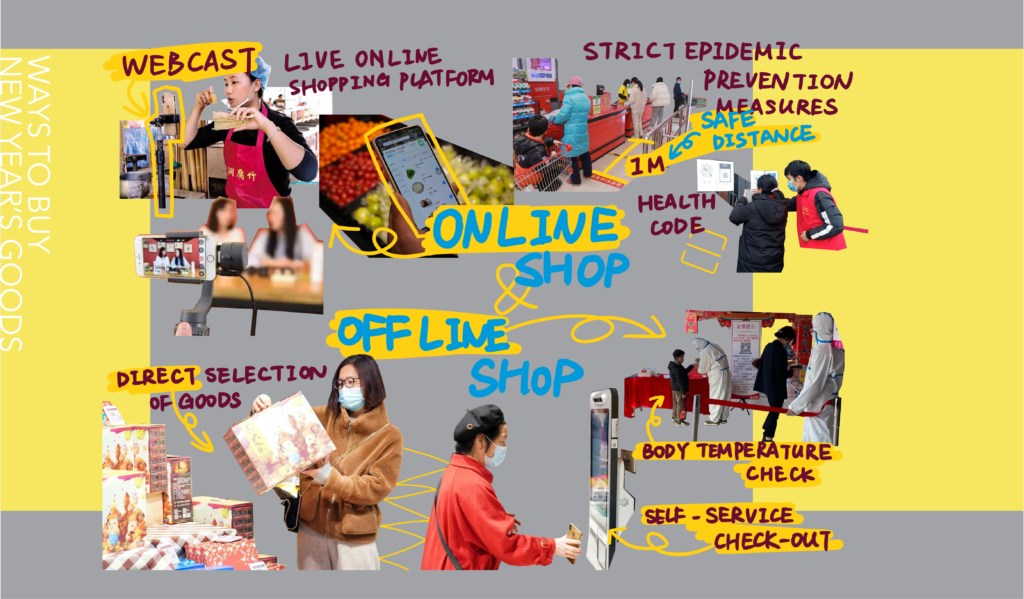
First of all, I studied the definition of New Year goods in a broad sense. The Chinese definition of New Year’s goods is mainly food and decorations prepared before and during the New Year to celebrate the New Year and visit relatives and friends. This means welcoming the new year with a new look. It is a very important Chinese New Year habit for Chinese people.
Then, I searched for some reports on New Year’s sales. I found that during this year’s Chinese New Year, both online and offline New Year’s merchandise sold very well. According to reports, the post-90s generation has become the main consumer group for New Year’s goods.

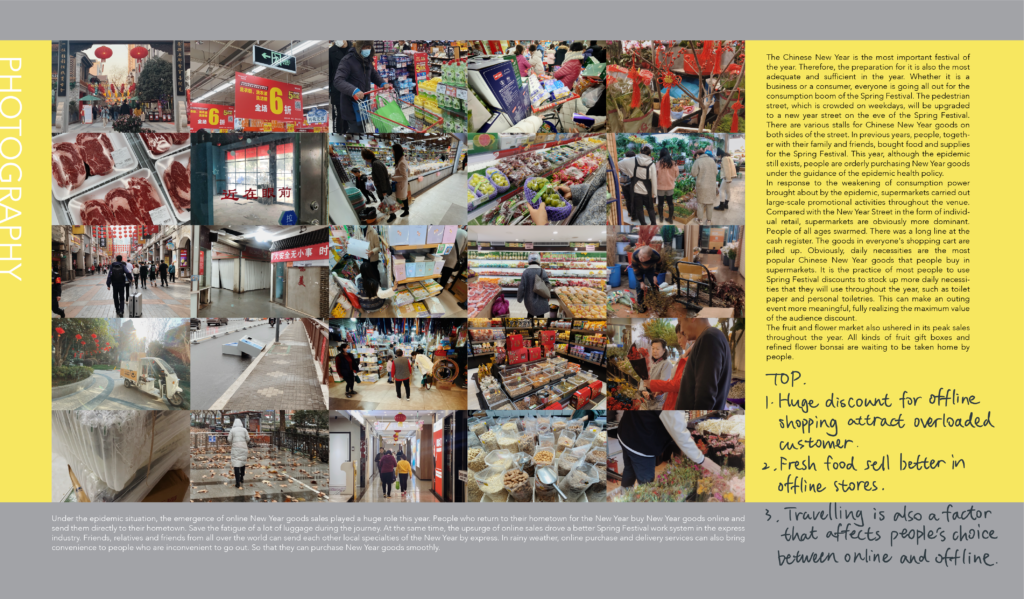
Therefore, I first observed and took photos. I found that due to the existence of the epidemic, online and offline sales of New Year’s goods are different from previous years. Since offline stores have stronger discounts, people will concentrate on making purchases during the discount event. As the New Year holiday approaches, more people go to offline stores to buy fresh products, such as fruits, meat, flowers, etc., which are not easy to store and need to be bought and used immediately. At the same time, travel issues are also factors that affect people’s choice of purchasing methods. When travel problems are greater, people are more inclined to shop online. The overall sales of online shopping platforms are also large. As far as I know, friends around me also buy more New Year goods online than in previous years.
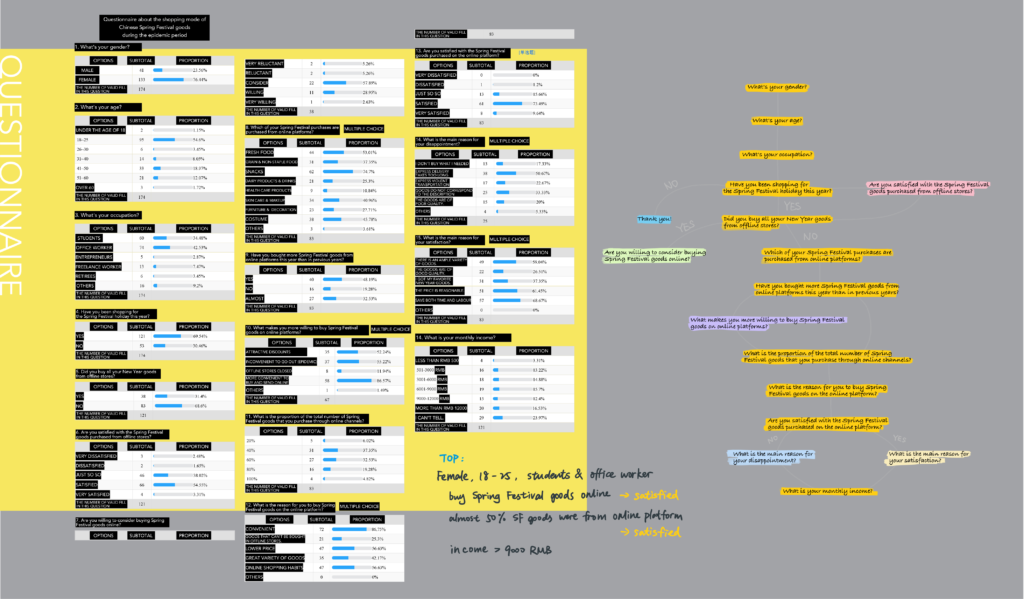
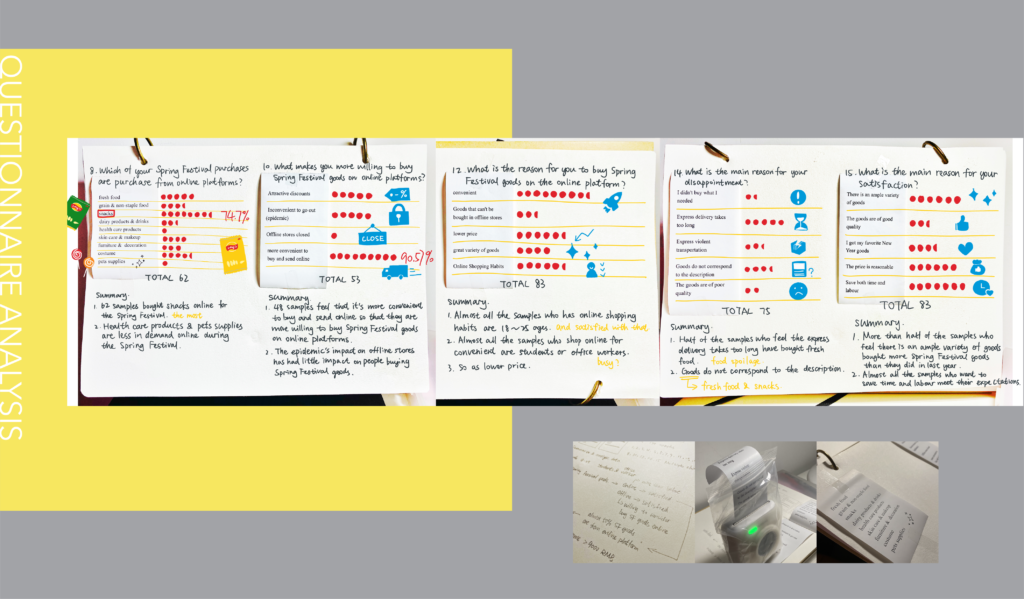
I also did a survey. I mainly asked some questions about the purchase of New Year’s goods this year. This is my questionnaire and question logic. There are 147 samples in total. Through the questionnaire survey, I found that women buy more New Year goods online. Most of them are office workers who have just started to work and have been shopping online. Therefore, I am familiar with online shopping. They are also more satisfied with the products purchased online.
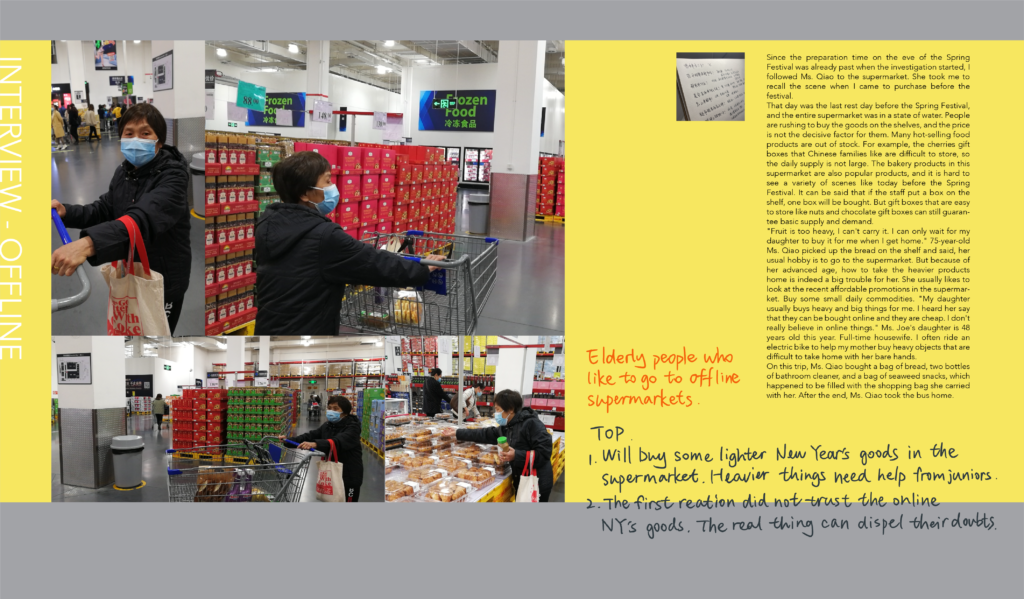
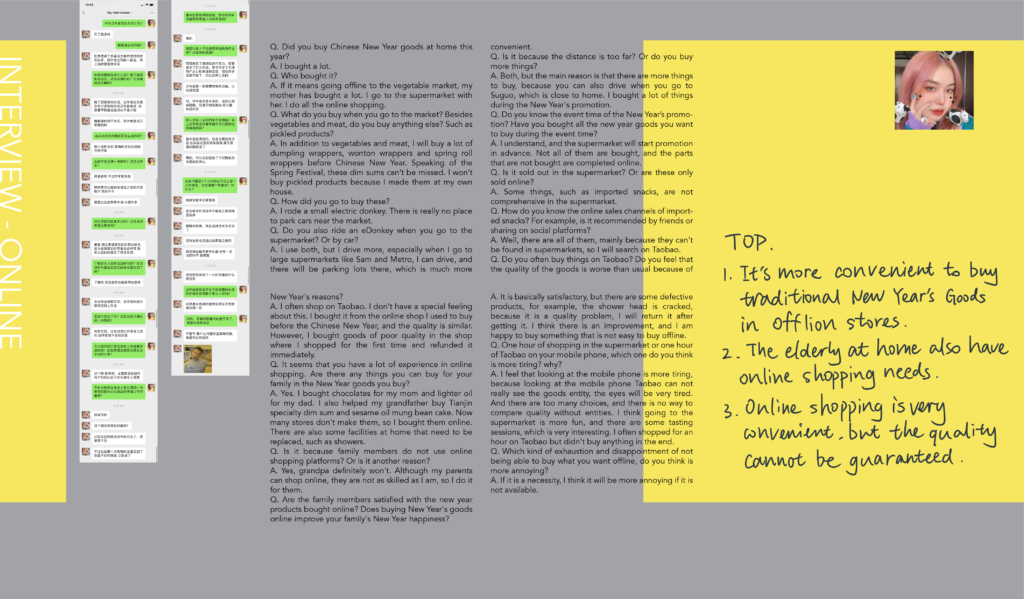
I interviewed an old woman who often shopped in offline stores and a girl who often shopped online. I found that older people actually need to shop online, but because they are not familiar with electronic devices, they need the younger generation at home to shop for them. Although they did not trust the quality of online shopping at the beginning, after actual use and experience, they will also be satisfied with online shopping for the New Year. Young people also have the idea of shopping offline, but due to busy work, they can only choose to go online. Young people also have a wide range of shopping needs, such as imported goods, so the all-encompassing Internet can meet all their shopping needs.

Final work
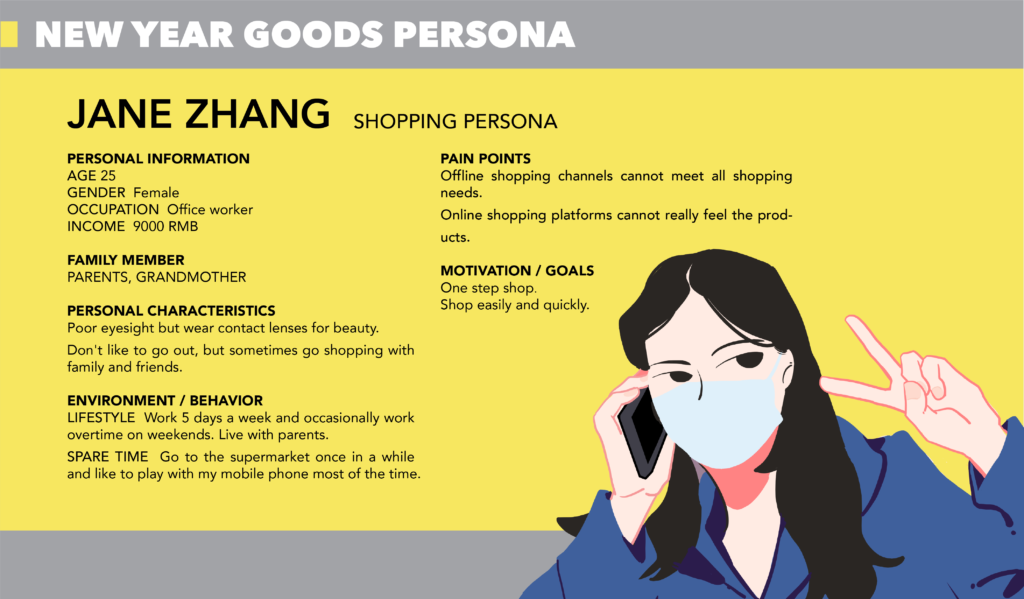
This is the persona. She is a girl after the 90s, and her family includes her parents and grandfather. She likes shopping online. She is very busy at work and rarely goes out. She needs a more comprehensive offline shopping place and an online shopping platform that can more comprehensively perceive product quality.
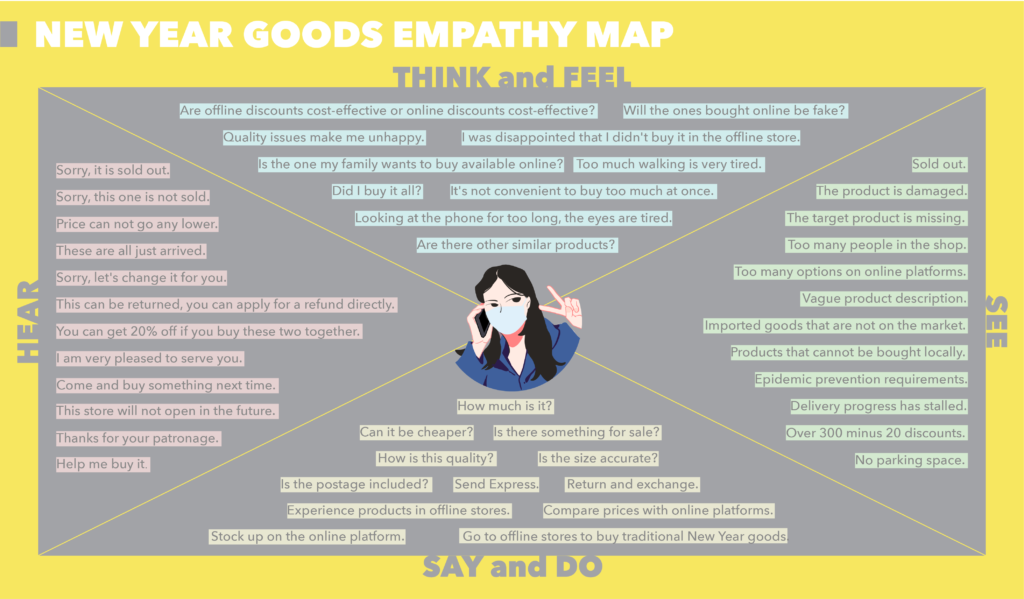
This is empathy map. It can be seen that when a customer needs to purchase New Year’s goods, she will consider both online and offline purchase methods and compare prices with lower purchase costs. In addition, for some necessities set by themselves, customers will consider the price less than whether they can successfully buy them.
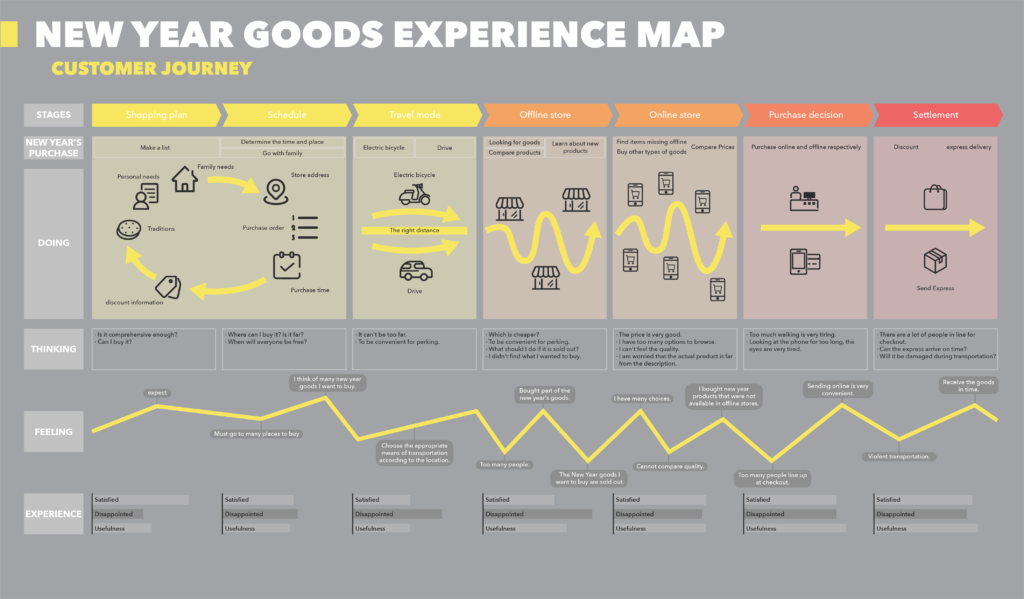
This is the user experience map. It can be seen that in the process of measuring products, customer satisfaction fluctuates greatly. Unsuccessful shopping can easily make customers feel disappointed. But a good solution can resolve dissatisfaction caused by product shortages or quality problems. Therefore, the design should focus on solving this problem.



